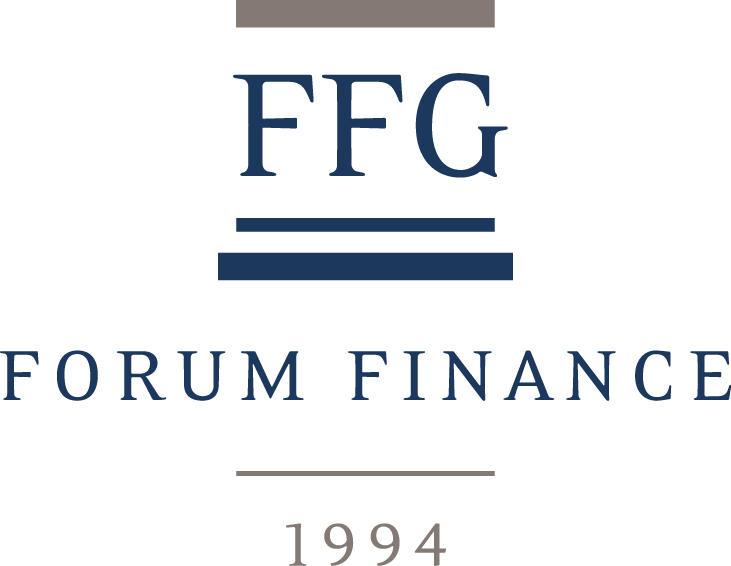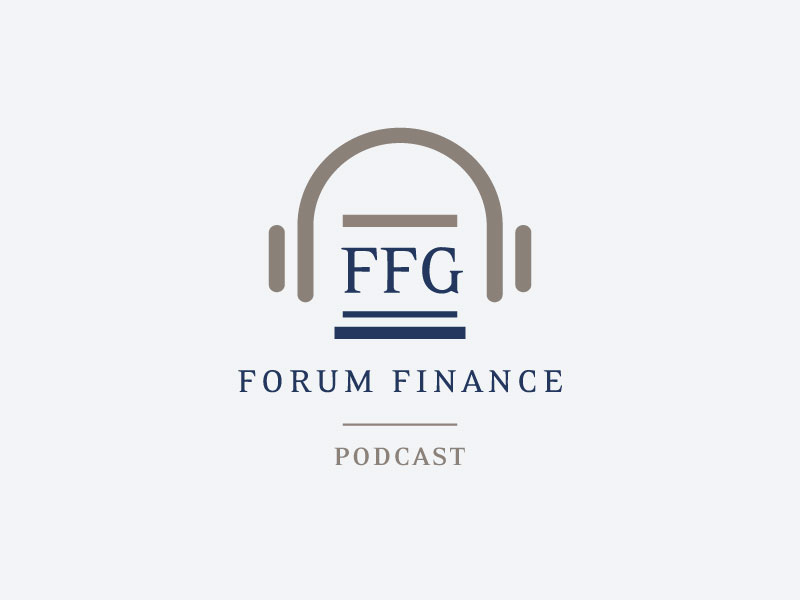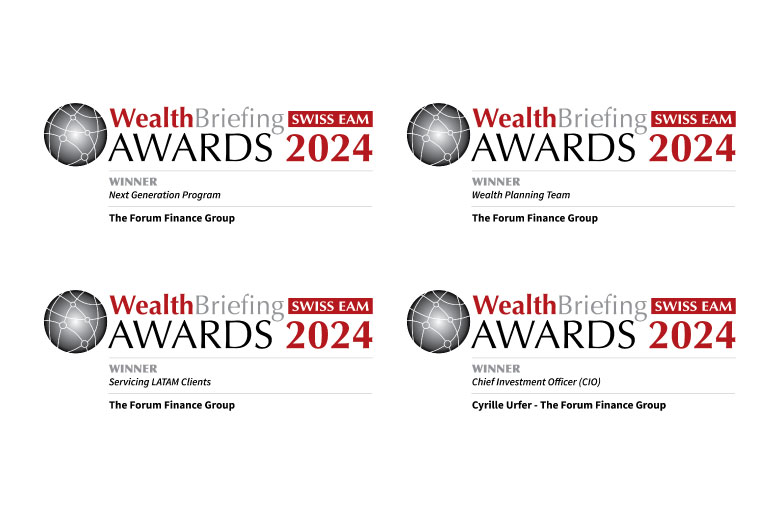Newsletter | September 2024
4 septiembre 2024Newsletter,Noticias financieras
The Federal Reserve (Fed) is ready to cut interest rates… and SOON!
-2.3% THE PERFORMANCE OF THE DOLLAR INDEX
Investment perspective
The beginning of the month was marked by a sharp sell-off triggered by weaker than expected non-farm payrolls and a rise in the unemployment rate for July, which raised concerns about US growth, and then the Bank of Japan's decision to raise interest rates for the second time this year. Markets reacted quickly. In the first few days of August, global equity markets plunged and bond spreads widened sharply. In the space of a few days, the main US index fell by more than 6%, while the Magnificent Seven fell by almost 10%. The initial sell-off was exacerbated by the unwinding of carry positions on the yen, triggered by the divergence in monetary policy expectations between the Bank of Japan, which is in rate hike mode, and the Federal Reserve, which is expected to begin its monetary easing cycle at its September meeting. These growing uncertainties led to a spike in volatility, with the VIX peaking above 65 in early August, one of the highest level on record. However, as markets gained confidence in the resilience of the economy, strengthening the case for a soft landing, the VIX fell back to levels around 15. Fortunately, the stress was short-lived and the recovery was swift, with the global index closing the month up 1.9% in local currency terms. The latest consumer price index (CPI) readings in Europe and the United States were down, well within the central banks' target ranges and clearly decelerating. This would further increase the likelihood of interest rate cuts. Credit spreads widened in sympathy before closing the month on a tighter note, while the yield curve steepened, with the 2-year benefiting the most from the increased likelihood of rate cuts. In this context, all fixed income segments posted positive returns over the month, with emerging market debt the best performer, followed by global high yield. The optimism surrounding the US rate cut claimed its first victim: the US dollar, which fell sharply against the major currencies (-2.5% against the euro) and even erased all its year-to-date gains against the Swiss franc. Finally, gold prices remained buoyant (+2.3%), while oil prices continued to fall, with WTI down 5.6% following a 4.5% fall in the previous month.
Investment strategy
After the market jitters of early August, which forced many players to rethink their stance and significantly reduce their leverage, the spotlight is back on the central banks. The Fed is likely to begin its monetary easing cycle in September. The market has priced in an aggressive bearish campaign, as it did at the start of the year. Those expectations were overly optimistic and forced the market to reassess the timing and magnitude of rate cuts. This time, however, the conditions for a rate cut appear to be more favourable, thanks to the slowdown in consumer price inflation brought about by a softer labour market. The upcoming labour market data will be crucial as it will determine the pace of rate cuts. The Fed is likely to cut rates by 25 basis points in September and the SNB is likely to follow suit. Although sentiment and momentum indicators briefly gave buying signals, especially for US equities, we decided to leave our exposure virtually unchanged. The rapid rebound in the markets quickly brought us back to a more neutral zone. We are clearly at a crossroads, especially as we enter a seasonally difficult period, but for the time being we remain constructive on both developed and emerging market credit and equities. August reminded us how heterogeneous alternative strategies can be, even within a single category such as trend strategies (CTAs). We reiterate our commitment to alternative trend strategies, which proved resilient in the sell-off as they are less exposed to crowding effects.
The ECB Minutes Indicate That, in July, Members Had an “Open Mind” About Further Rate Cuts
Portfolio Activity/ News
After a few days of intense stress, markets calmed down and ended the month on a very positive note across all asset classes, except for some global macro and trend strategies. During the month, we took advantage of price differentials to slightly reduce our exposure to emerging market debt, which reduced the negative impact of the weakness of the US dollar against the Swiss franc and the euro. In fixed income, we have maintained a high interest rate sensitivity, not only to benefit from falling inflation, but also to provide a cushion in the event of a more pronounced economic slowdown. This position was built up gradually and played its full role during the tensions of early August. After a brief spike, credit spreads returned to their end-July levels, giving us the highest return in the bond segment over the month. We continue to have confidence in corporate bonds across the board, from investment grade to high yield, in both developed and emerging markets. The increase in volatility provided us with a good opportunity to rebalance our allocations. Against this backdrop, we are maintaining our preference for European equities over US equities, especially after the turmoil caused by the political posturing in France. Having been cautious on emerging markets, the prospect of an interest rate cut in the US encourages us to be more constructive on these markets. As a result, we have finally exited China as a dedicated allocation in favour of an increased weighting in global emerging markets. The most significant change in our allocation has been the increase in the weighting of alternative strategies, in particular global macro strategies, where we have almost doubled the weighting.
Download the Newsletter
Newsletter | August 2024
8 agosto 2024Newsletter,Noticias financieras
European Central Bank (ECB) left its benchmark interest rates unchanged
10.2% THE PERFORMANCE OF THE RUSSELL 2000
Investment perspective
July was a turbulent month, particularly in the second half, but marks a turning point in the relative performance of small and large caps. US indices ended the month in positive territory, with small caps posting a stellar 10.2% return, in contrast to the tech-heavy indices, which fell during the month. Global economic growth slowed slightly in July. At its current level (52.5 in July versus 52.9 in June), the global PMI is consistent with the global economy growing at an annualised rate of 2.8%, compared with an average growth rate of 3.1% in the pre-pandemic decade. In the US, inflation fell below 3% and was well below expectations, while the core personal consumption expenditure price index rose by a seasonally adjusted 0.1% in the month and was 2.6% higher than a year earlier. The US labour market continued to weaken, with the unemployment rate rising to 4.3%, although the labour force participation rate rose and job growth remained relatively stable. New and existing home sales fell in July, while median sales prices for existing homes reached another all-time high. The continuation of this disinflationary trend supported market expectations that the Fed would finally begin to ease policy at its September meeting. This welcome news on the inflation front helped US Treasury yields to fall sharply, with the middle of the curve posting the largest month-on-month declines. The bond indices all posted positive returns, with the long-dated government segments posting the best results thanks to the easing in the interest rate component of the bond markets. The US long-dated Treasury index gained 3.6%, its best month since the beginning of the year. After a difficult June, the European market performed in line with the US indices in July. However, dispersion was high across regions. The Swiss market (+2.7% in local currency) and the UK market (+2.5% in local currency) performed very well, while the Eurozone index continued to lag, rising 0.4% in local currency over the month. The performance of commodities was mixed. Gold rose by 5.2% while crude oil (WTI) fell by 4.5%.
Investment strategy
The market has become more confident that interest rates will fall soon, with the probability of a Federal Reserve rate cut in September rising from 72% to 92%. The acceleration in rate cuts should also be seen in the context of the target level of the interest rate at the end of the easing cycle, the so-called terminal rate. Here, too, expectations have fluctuated widely. After a trend of steady upward revisions since January, reaching a high of over 4.9% at the end of May, short-term interest rate expectations for January 2025 have fallen back to the level expected at the beginning of the year, i.e. an implied interest rate of 3.8%. This downward shift in expectations has been massive and contrasts with the consensus view of just a few weeks ago. This trend was exacerbated by the panic in global equity markets at the beginning of August. Are we witnessing a major shift in US economic expectations that, if confirmed in forthcoming data, will force the Federal Reserve to cut interest rates not in line with falling inflation, but as a matter of urgency to save the economy? Although we might have feared an increase in the risk of the slowdown scenario reappearing as likely, the macro data remain constructive overall, but the risk of exaggeration and reversal remains as high as ever.
Powell Suggested a Rate Cut Could Come in September, the Fed’s Next Meeting
Portfolio Activity/ News
The dramatic risk-off moves in recent days, such as the fall in global equity markets and digital assets (e.g. cryptos), remind us of the importance of a balanced position in our portfolios at this stage of the cycle. In fixed income, we have increased our exposure to government bonds to take advantage of the more accommodative monetary policy, but also as a hedge against a more pronounced economic slowdown. We are currently evaluating whether to continue the rebalancing of our bond portfolio, but we expect to be in a better position to do so in the coming months. In equities, we gradually became more cautious during the second quarter, reducing our equity allocation and favouring more defensive strategies such as long/short. We had no positions in Japanese equities and, until recently, were cautious on emerging markets. Our more diversified positioning should allow us to ride out this turbulent period with greater composure and take advantage of any opportunities that may arise in the event of an exaggeration. We are maintaining our current allocation as long as the technical levels of the uptrend remain intact. However, we are aware that the market's momentum has slowed and this alone could justify a continuation of the adjustments we have made in recent months. If such a reversal were to occur, we would initially reduce our equity exposure and reduce our credit exposure in developed and emerging markets in favour of medium- and long-term government bonds.
Download the Newsletter
Perspectivas | Segundo Semestre 2024
1 julio 2024Investment perspectives,Noticias financieras
Resumen ejecutivo
Somos partidarios de un posicionamiento más equilibrado entre las distintas clases de activos y dentro de ellas. Creemos que los rendimientos de los bonos, incluidos los de los bonos del Estado -algo nuevo para este segmento- son atractivos. El carry crediticio es atractivo en relación con los fundamentales de las empresas, mientras que los bonos del Estado a largo plazo ofrecen protección en tiempos más difíciles, además de su rendimiento real.
Los datos económicos favorables y la perspectiva de recortes de los tipos de interés, es decir, los ingredientes de la narrativa del aterrizaje suave, junto con unos sólidos beneficios trimestrales, justifican una postura constructiva sobre los mercados de renta variable. Sin embargo, nos gustaría ver una participación más amplia en el repunte del mercado para reducir la fragilidad del ciclo alcista iniciado a principios de 2023.
Aunque mantenemos una asignación al sector tecnológico y a los famosos siete gigantes, estamos equilibrando nuestras carteras con una exposición a las pequeñas y medianas empresas y al estilo de valor, donde las valoraciones parecen ofrecer un importante potencial de recuperación.
Perspectivas económicas
Se rebajan las previsiones del PIB real de EE.UU. y Japón.
Mejoran las de China y la zona euro
La relajación monetaria se generaliza
La Fed y el Banco de Inglaterra se mantendrán a la espera hasta septiembre y agosto, respectivamente
El gráfico de puntos del FOMC implica sólo un recorte de 25 puntos básicos a finales de año y cuatro en 2025
Fannie Mae predice que los tipos hipotecarios en EE.UU. promediarán el 7% en 2024
Principales riesgos
Ralentización más marcada en EE.UU. por el fuerte deterioro del mercado laboral
Se intensifica la guerra comercial entre EE.UU. y China y entre la UE y China
La crisis de la deuda soberana obliga a los gobiernos a recortar el gasto
La deriva populista en las urnas, a prueba los cimientos de nuestras democracias
Convicciones de inversión
La renta fija suele ir bien cuando la Fed hace una pausa
La deuda pública a largo plazo como cobertura frente al temor a una nueva recesión
La dinámica de la inflación favorece a los tipos europeos frente a los estadounidenses (10 años +)
Los bonos corporativos de los mercados emergentes ofrecen mayores diferenciales y ventajas de diversificación
Prefiero Los Cinco Fantásticos de la UE a Los Siete Magníficos de EE.UU.
La pequeña y mediana capitalización ofrece una valoración y una sensibilidad económica convincentes
Añadir valores por su valoración relativa y diversificación
ÍNDICE
- PERSPECTIVAS 2024
- UN BREVE REPASO : EL PRIMER SEMESTRE DE 2024
- PERSPECTIVAS DE MITAD DE AÑO
- CONVICCIONES DE INVERSIÓN : SEGUNDO SEMESTRE DE 2024
- OPINIONES SOBRE LAS CLASES DE ACTIVOS - 2H 2024 : CAMBIO A NEUTRAL
Descargar las perspectivas para 2S 2024
Newsletter | May 2024
4 junio 2024Newsletter,Noticias financieras
Global economic growth expanded at the fastest pace in ten months
15.65% THE PERFORMANCE OF THE SILVER PRICE
Investment perspective
April's correction seems almost forgotten thanks to May's rally, which took equity markets to new highs. But June is likely to be another volatile month, with the monetary policy decisions of the major developed central banks on the agenda. Recent economic data, particularly on the inflation front, has been broadly in line with consensus expectations, albeit with a glaring lack of progress towards the central bank's ultimate target of 2.0%. In the US, the personal consumption expenditure (PCE) price index excluding food and energy rose 0.2% in April (in line with estimates) and 2.8% year-on-year, or 0.1% above the estimate. More important, however, is the direction of core inflation. In April, core prices were up 3.6% year-on-year, down from 3.8% in March and up 0.3% month-on-month, the smallest monthly increase since December. In the UK, inflation continued to fall in April to its lowest level since July 2021, with consumer prices up 2.3% year-on-year. However, core prices, which strip out volatile food and energy prices, were up 3.9% year-on-year. Probably still too high for the Bank of England. Eurozone inflation rose 2.6% in May, higher than expected, while core inflation rose to 2.9% from 2.7% in April. Although May's figures were better than expected, it's worth remembering how far we've come since the peak of 10.6% in October 2022. May mirrored April across all fixed income segments. Bond indices were all in positive territory over the month. High yield (HY) markets and emerging market debt (EMD) more than recouped April's losses. Despite the rebound in May, the corporate investment grade (IG) segment remained in negative territory for the second quarter, with a negative return of 75 basis points for the quarter to date after a lackluster first quarter. With PMI indices in the major regions in the range generally associated with expansion (above 50) and encouraging developments in the eurozone, equity markets reached new highs in May. The US large cap segment gained 4.9%. In terms of investment style, growth outperformed value with a gain of 6.0% compared to 3.2% for value, while small caps returned over 5.0% for the month. Although European indices underperformed their US counterparts (+3.3% in euro terms), the Swiss equity market staged a comeback, rising by 6.3% in local currency terms.
Investment strategy
Recent publications have partly allayed immediate fears of an uncontrolled resurgence of inflation, allowing US long-term rates to ease slightly over the month. As a result, the ECB is widely expected to cut its key rates on June 6th, and any other decision would be a major surprise. With the economy and labour market in relatively good shape, the Fed is expected to keep rates on hold until it sees more evidence that inflation is on track to reach its 2% target. The all-in yield, as well as the hope of capital gains once the central banks start cutting rates, has made fixed income quite attractive. These factors have attracted investors, as evidenced by flows into the corporate bond market. According to the latest release from Bank of America, investment grade (IG) corporate bonds recorded their 31st positive weekly flow, with $3.6bn in the week ending last Wednesday, the longest streak since 2019. Despite the strong inflows, fixed income markets, particularly those with high interest rate sensitivity, have suffered. The ongoing inversion of the yield curve, caused by a slower decline in inflation towards the central banks' ultimate target of 2.0%, has led to greater caution regarding the speed and amplitude of policy rate cuts. This recalibration of interest rate expectations has made short-term bonds, and to some extent cash, attractive because of their favourable interest rate risk/return profile at a time when the path of interest rates is still quite uncertain.
One Stock Driving the Magnificient 7’s in 2024: NVIDIA +138% as of May 29th Close
Portfolio Activity/ News
After two months of fairly balanced returns in fixed income markets and modest gains in economically sensitive assets such as credit spreads and equities, we maintain a balanced positioning across asset classes, regions and sectors. Thanks to attractive all-in yields, our positioning remains broadly exposed to credit, which should continue to benefit from the growing acceptance that global economic growth will remain resilient and even improve in some regions. Admittedly, credit spreads have already tightened considerably in response to this favourable environment and are trading below the median spreads of the last 5, 10 and 30 years. However, while spreads reflect a lot of positive news, they have historically shown that they can remain tight for extended periods of time. Given the reduced uncertainty about the near-term path of US long-term rates, the improvement in emerging market economies and the easing of election deadlines following the results in Mexico and India, we are increasing our exposure to USD-denominated EM corporate debt. As we did a few months ago, we have added a long/short equity position within our European equity exposure to increase the resilience of this segment. In emerging markets, we maintain our conviction in Chinese domestic equities. It should be noted that our dedicated EM exposure is largely achieved through a dedicated bond component, which currently offers a more favourable risk/return profile than emerging market equities excluding China.
Download the Newsletter
After 30 years of success, Forum Finance has established itself as a leader in independent asset management in Switzerland
7 mayo 2024Press Releases & Sponsoring,Press Releases
After 30 years of success, Forum Finance has established itself as a leader in independent asset management in Switzerland
Geneva, 7 May 2024 – 30 years after its creation, Geneva-based asset management company The Forum Finance Group SA is reaping the rewards of its investments and is thus ready to face the decades to come. With more than 25 employees overseeing almost CHF 2 billion, Forum Finance now ranks among the top 3% of independent asset managers in Switzerland and has the resources to match its ambitions. Thanks to its proven corporate governance, which provides access to capital for new partners, it is able to attract talented individuals who share its entrepreneurial vision
The results of its first 30 years of existence are particularly positive, and Forum Finance celebrated this jubilee in style last month by winning four major awards at the WealthBriefing Swiss EAM Awards 2024 (best ‘Next Gen’ program, best wealth planning team, best service to Latin American clients and best Chief Investment Officer in the person of Cyrille Urfer).
Its size enables Forum Finance to make the investments necessary to ensure its future development, whether in terms of technology or human resources. More fundamentally, at a time when many first-generation investment companies are struggling to find buyers or to ensure the succession of their founders, Forum Finance has for years had an effective and resilient governance system in place, which allows for a smooth renewal of its shareholder base and the arrival of new partners at the helm. This is a convincing argument for private bankers looking for a new home.
Forum Finance was also able to anticipate at an early stage the changes in the asset management industry. As early as 2015, it strengthened its structures in order to obtain a CISA licence from FINMA. Forum Finance is also registered with the SEC, which allows it to deal with US clients and provides an additional guarantee of solidity and transparency. In addition, Forum Finance has been investing for years in its research, investment management and wealth advisory resources, in order to respond effectively to the changing needs of its clients. Forum Finance thus offers wealth managers with an entrepreneurial spirit a solid framework, offering a fair and collaborative culture.
Hippolyte de Weck, CEO of Forum Finance, said: «Our 30th anniversary celebrations are the culmination of two particularly positive years for Forum Finance, with the appointment of two partners in 2022, the arrival of a new partner and the strengthening of our Board of Directors last year, topped off by four awards from WealthBriefing last month. Over the past thirty years, our company has grown considerably to become one of the leading players in the Swiss market. We owe this success, of course, to the commitment of each and every one of our employees, but above all to the trust and loyalty of our customers.»
For additional information, please contact :
Egon Vorfeld
The Forum Finance Group SA
T: +41 (0)22 552 83 00
E: vorfeld@ffgg.com
ffgg.com
Ricardo Payro
Payro Communication Sàrl
T: +41 (0)22 322 13 17
E: :rp@payro.ch
payro.ch
About Forum Finance
Founded in 1994 in Geneva, Forum Finance offers private banking and asset management services to a high-end global clientele. It has 25 employees who manage and supervise around CHF 2 billion. The company is authorised under the CISA licence by FINMA and is registered with the SEC as investment adviser.

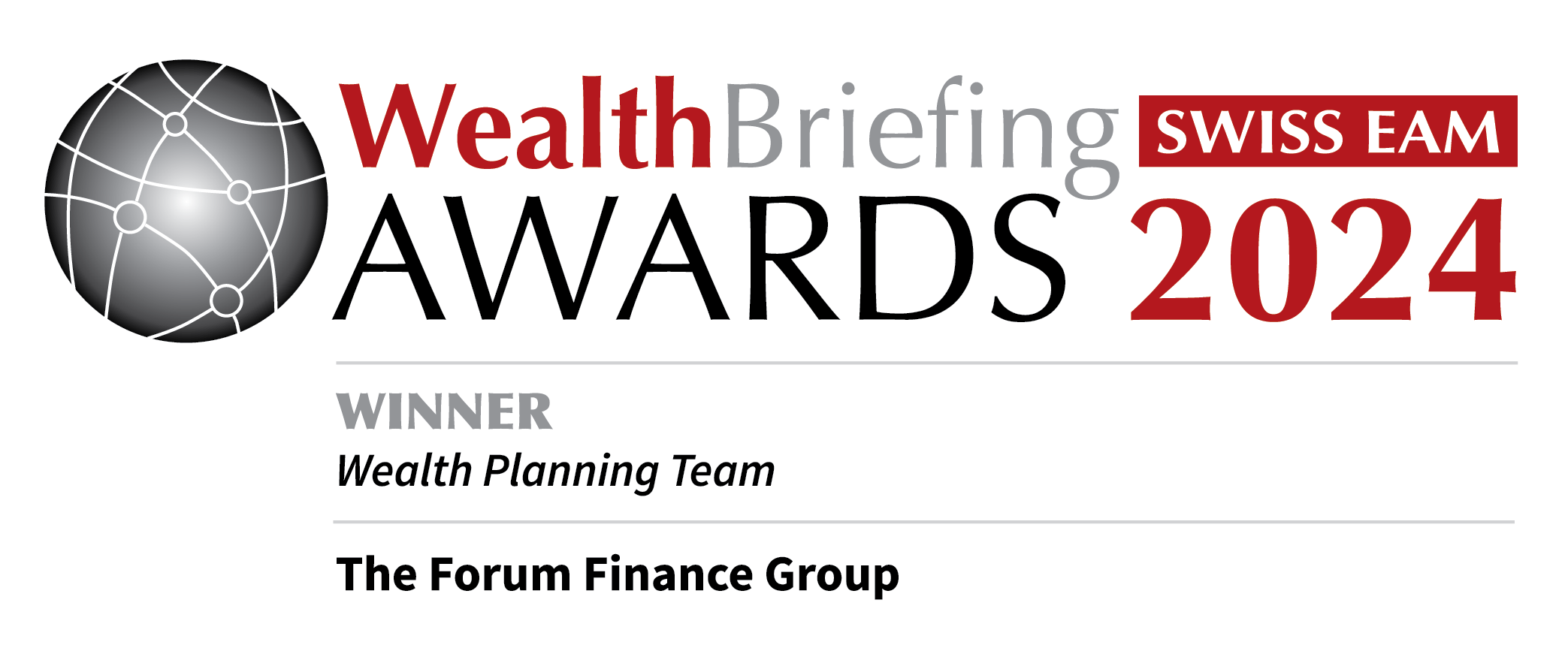
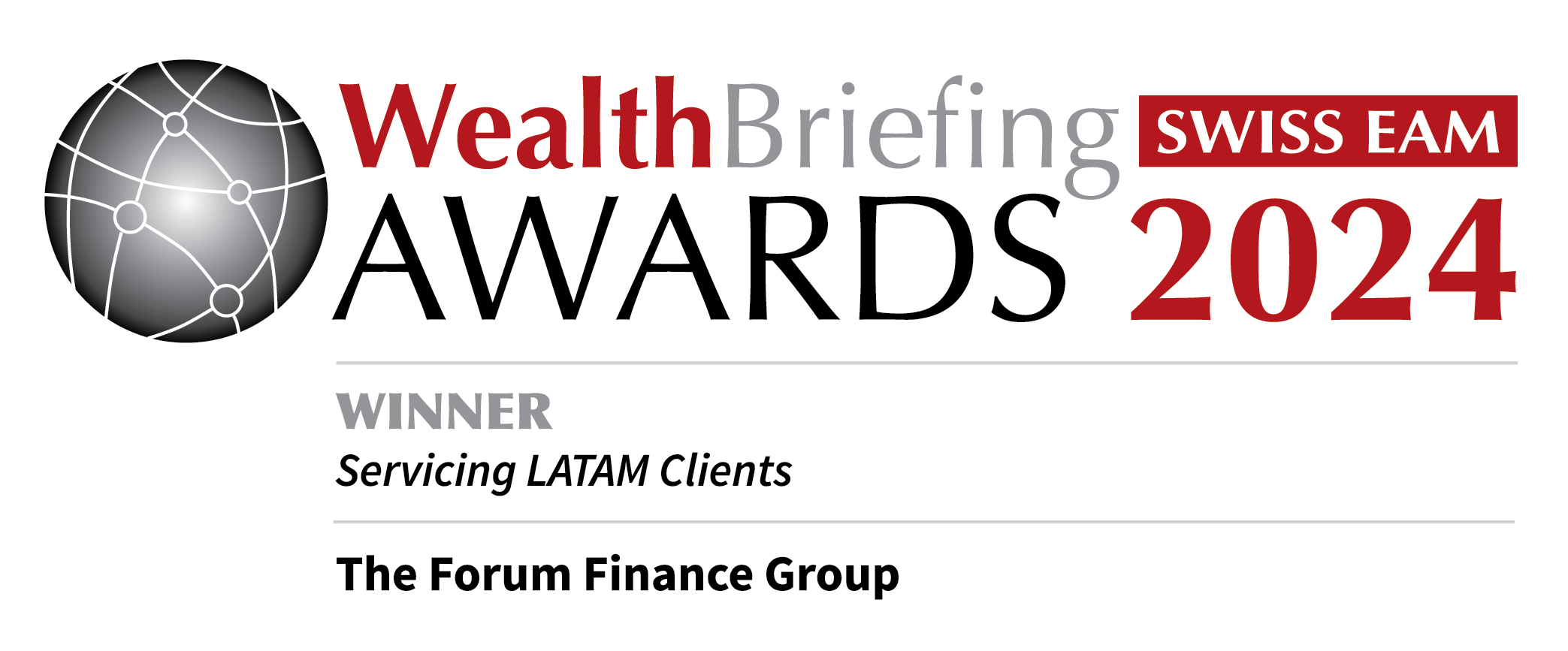
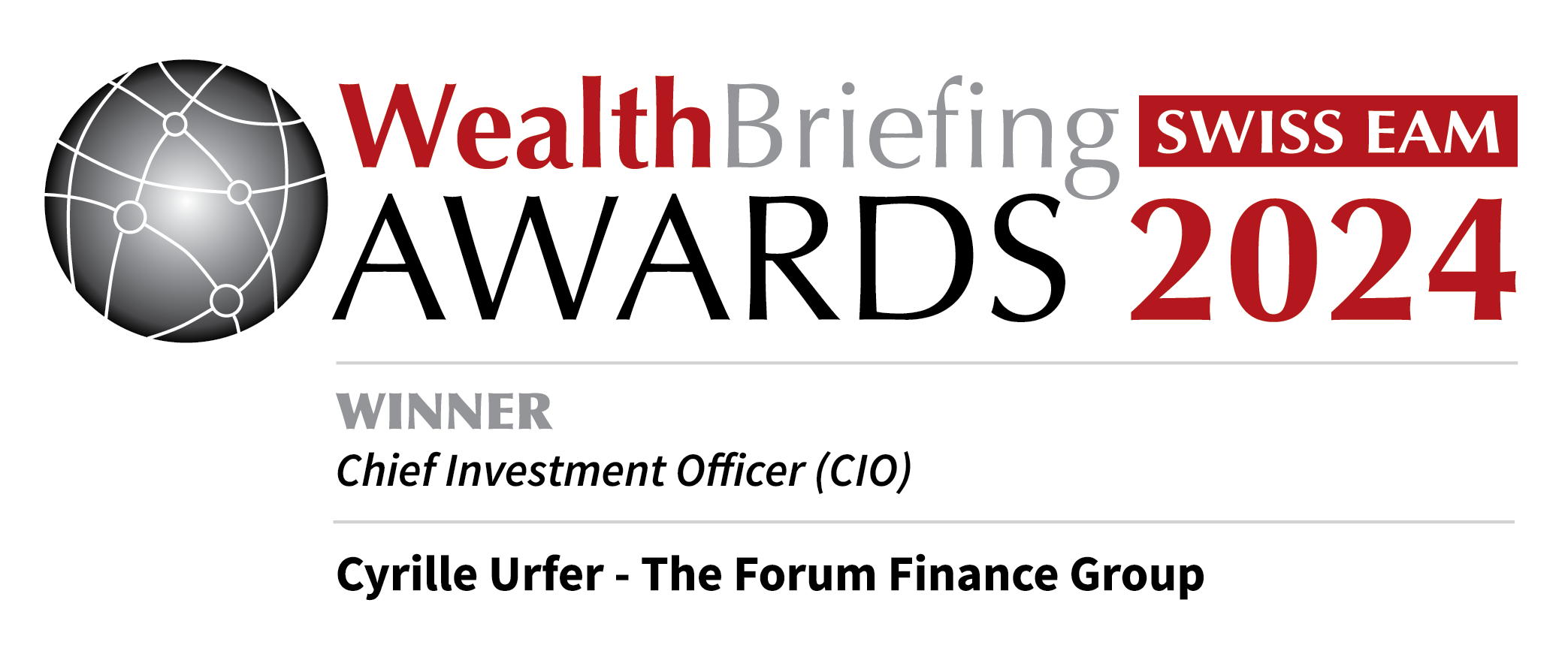
Newsletter | March 2024
8 abril 2024Newsletter,Noticias financieras
The US Large Cap Index hit eight new closing highs in March
10.09% THE PERFORMANCE OF SILVER PRICE
Investment perspective
Despite the most aggressive tightening cycle, the US economy continues to defy the historical relationship between economic growth and interest rates. We expect US real GDP to grow by around 2% this year, with the potential for upside surprises. Recent headline inflation readings have pointed to some upward pressure, while core inflation has declined slightly, without calling into question our central scenario of a gradual decline in inflation towards 2.0%. Eurozone inflation surprised to the downside in March, with headline inflation coming in at 2.4% year-over-year, below the consensus of 2.6%. The SNB, acting very independently, surprised the market by starting the long awaited cycle of rate cuts among developed central banks. The Fed and the ECB have reiterated their intention to cut rates several times this year and next. Despite higher-than-expected inflation rates, the Fed expects that stronger than-expected labor force growth and increased investment will stimulate the supply side to the point that inflation will continue its downward trend. The BoJ raised its key rates (dovish hike) but will continue to buy large amounts of government bonds each month. The 10-year US Treasury yield fell slightly to end the month at 4.2%, while in Europe the 10-year Bund followed the same trend to end the month at 2.85%. US large cap equities hit eight new closing highs in March, rising 3.1% for the month. Breadth improved over the month and was strongly positive, with the equal weight index gaining 4.4%. We are seeing an increasing divergence in the return patterns of the Magnificent Seven, with Tesla down 29.3% year-to-date. European equity indices rose by 4.4% in euro terms over the month, outperforming their US counterparts. It should be noted, however, that while the market breadth is also underway, it is still very tentative. In line with the start of the year, emerging markets continue to lag, while the Japanese market continues to deliver an excellent return in local currency terms, up more than 19% year-to-date. The highlight of the month was undoubtedly the surge in gold and silver prices, up 8.3% and 10.1% respectively over the month, as lower interest rates increase the appeal of holding non-yielding bullion.
Investment strategy
The near-term growth outlook in the US remains solid, with economic data continuing to surprise on the upside. The median forecast for real GDP growth in 2024 has risen from 1.4% at the December FOMC meeting to 2.1% today. The Eurozone economy is on the upswing, with the latest business surveys pointing to the fastest expansion of private sector activity in ten months. Business optimism rose to its highest level since the eve of Russia's invasion of Ukraine. The eurozone's economic recovery should continue, with growth forecasts for the first half of 2024 potentially revised upwards. The main risk is a rise in commodity prices, which could lead to a resurgence of inflation in European economies. European leading economic indicators are clearly picking up, but Europe’s still very attractive valuations suggest that a lot of negative news is still priced in. The probability of positive surprises could therefore increase as the European economies regain traction. The Swiss equity market could benefit from the recent interest rate cut by the Swiss National Bank and the weakening of the Swiss franc. These developments will help mitigate the headwinds faced by Swiss companies last year and contribute to positive earnings revisions.
Estimated 1Q24 y/y earnings growth rate for the S&P 500 is 3.6%, third straight quarter of y/y earnings growth
Portfolio Activity/ News
Many technical indicators have reached levels historically associated with tops, but the trend is still our friend as it remains clearly up. Investor optimism could continue into April, which is historically one of the strongest months of the year for the US equity market. We are therefore maintaining our overweight in equities, with a clear preference for European equities, to take advantage of the current macro and market momentum, although we have reduced this overweight somewhat. We have also made some adjustments to the composition of our equity exposure, increasing the allocation to a top-down strategy at the expense of strategies with a strong growth bias. Chinese equities were very oversold and the recent rally has helped a little, but market psychology is extremely bearish on Chinese equities, which can be interpreted as a contrarian signal for this market. We are maintaining our exposure to Chinese domestic equities. The Chinese A-shares are our main exposure to emerging markets in our portfolios. Our bond portfolio remains exposed to both investment grade and high yield credit as well as hard currency emerging market debt. We added to the latter in March. Although our interest rate sensitivity has increased, it remains lower than that of the main bond indices. We are keeping a close eye on the resistance level for US yields (4.35% for the 10-year yield), as a breach of this level could send a particularly negative signal to the markets.
Download the Newsletter
